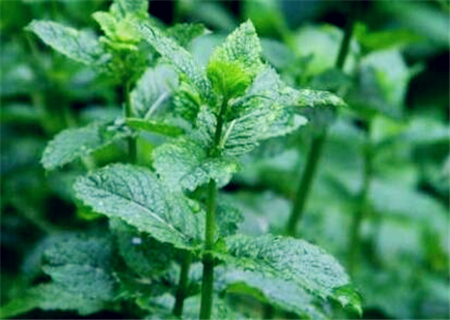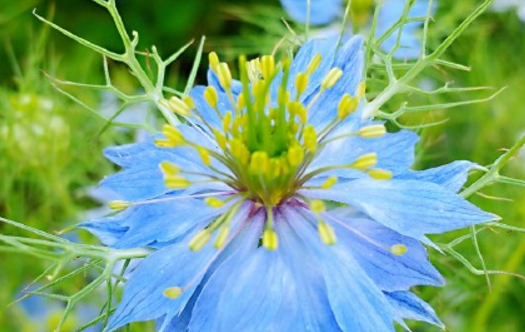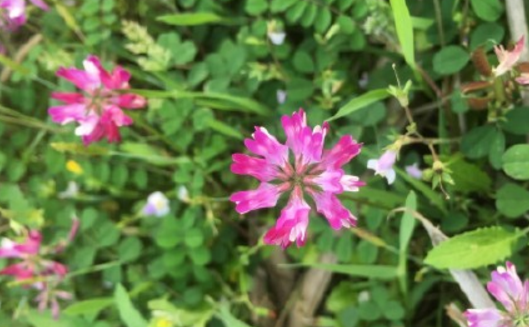How to grow peppermint in common use? When will it be ready to plant? What are the planting methods?
Peppermint is one of the commonly used traditional Chinese medicines in China. The local name is "Yindancao". It is a cool antipyretic for sweating, treating influenza, headache, red eyes, body heat, throat, gums and other diseases. So how do you grow mint? When will it be ready to plant? What are the planting methods?

Peppermint planting time
The planting time of peppermint is mainly determined by local climatic conditions. Guangdong, Hainan and other provinces can be cultivated all the year round, Jiangsu and Zhejiang around the "Qingming Festival". When the temperature picks up, Rain Water often has high humidity and is easy to survive after planting. In southwest China, planting is best when the rainy season begins. Open field cultivation and protected field cultivation can be adopted in North China and Northeast China. Once planted, it can be harvested continuously for 2-3 years.
Planting method of peppermint
First, choose improved varieties. The improved varieties of peppermint Asia 39 and Fuyou 1 have strong disease resistance, high brain content and pure fragrance. Therefore, when raising seedlings, it is best to choose these two varieties. Improved varieties are a prerequisite for high quality and high yield.
Second, soil preparation and fertilization. Select fields with high terrain, good drainage, deep soil layer, loose and fertile fields (sandy loam is better), intensive cultivation. Combined with soil preparation to apply sufficient base fertilizer: 3000~5000kg per mu of soil miscellaneous fertilizer, 15% of nitrogen, phosphorus and potassium compound fertilizer 50kg. Breeding method: cutting propagation. The stem of the first stubble mint was cut into long segments of 30cm and immediately planted on the finished border surface according to the row spacing of 30cm × 15cm.
III. Seedling raising and propagation techniques
1. Seedling raising time. It is usually carried out after the first crop mint grows into the flower bud stage. The south is around June and the north is around July.
2. Rhizome propagation. After the first mint harvest, the underground rhizome was dug out and planted on the whole border surface according to the row spacing 30cm × 15cm.
IV. Field management
1. Watering. After mint planting, the soil moisture should be maintained and watered frequently to facilitate the rooting and emergence of mint.
2. Weed control. Herbicide 100g / mu 60kg was sprayed evenly on mint field before emergence of mint, which could effectively control many kinds of weeds. After peppermint seedlings, if there are individual weeds that have not been removed, they can be pulled out manually to facilitate the growth of mint. 3. Spray peppermint yield increasing agent. 100 g peppermint yield increasing agent per mu was sprayed evenly into 300 times solution. Spray once every 10 days, three times in a row. Topdressing: when peppermint seedlings are high 10cm, topdressing should be done once. Urea 10kg and potassium dihydrogen phosphate 5kg were applied per mu.
4. Pest control: the main diseases of mint include spot blight and rust, which can be controlled by conventional methods at the initial stage of the disease.
Fifth, harvest. Peppermint can be harvested around the end of October. First cut off the aboveground stems and leaves, and then dig out the underground stems to carry out propagation and planting. The stem can be expanded to 10 mu per mu.
Matters needing attention for planting peppermint on balcony
(1) peppermint needs plenty of sunshine. If you raise mint, you must keep it in a sunny place. You don't have to worry about the sun in summer. If there is not enough sunshine, mint is easy to grow, the leaves are not big, and they are very thin.
(2) raising mint needs plenty of water, hydroponic culture is OK, but soil culture will grow better. If not watered for a few days, the flowerpot is extremely dry, even the leaves are dry and withered, do not worry, as long as the root has vitality, and then watered, it will soon restore the vitality of the past.
(3) if the flowerpot is too small or the soil is too little to keep up with the nutrition, it will grow very slowly. So use highly permeable, very fertile soil. Ordinary garden soil, rotten leaf soil. It would be nice to add some chicken manure. It is not picky about the soil.
(4) in spring or autumn. If you change to a larger basin, the soil will be more fertile and will grow faster, because it is the same as the orchid, and even the root system develops faster than the orchid, and will soon occupy the whole flowerpot.
(5) usually placed in the indoor sunny ventilation place is beneficial to its photosynthesis to reduce the phenomenon of excessive growth of yellow leaves, and proper loose basin soil is beneficial to root growth from January to February.
Time: 2019-03-16 Click:
- Prev

What are the recommended breeding methods and precautions for Ranunculus black? How do you breed? What are the main values?
Black recommended, alias is black grass, and Adan, so black recommended breeding methods and points for attention? How do you breed? What are the main values? According to the data, the growth habit recommended by Black is very similar to that of most plants. It likes the environment with plenty of light and can be cold-resistant. When it comes to black culture, it is recommended.
- Next

Is Ziyunying of Rosa suborder poisonous? Breeding methods and matters needing attention? What's the difference with alfalfa?
Artemisia mandshurica is an herbaceous plant with pinnately compound leaves that will blossom, so is it poisonous? Breeding methods and matters needing attention? What's the difference with alfalfa? According to the data, Ziyunying prefers a warm and humid growth environment, can be cold-resistant, and is required to have sufficient water when breeding.
Related
- Fuxing push coffee new agricultural production and marketing class: lack of small-scale processing plants
- Jujube rice field leisure farm deep ploughing Yilan for five years to create a space for organic food and play
- Nongyu Farm-A trial of organic papaya for brave women with advanced technology
- Four points for attention in the prevention and control of diseases and insect pests of edible fungi
- How to add nutrient solution to Edible Fungi
- Is there any good way to control edible fungus mites?
- Open Inoculation Technology of Edible Fungi
- Is there any clever way to use fertilizer for edible fungus in winter?
- What agents are used to kill the pathogens of edible fungi in the mushroom shed?
- Rapid drying of Edible Fungi

